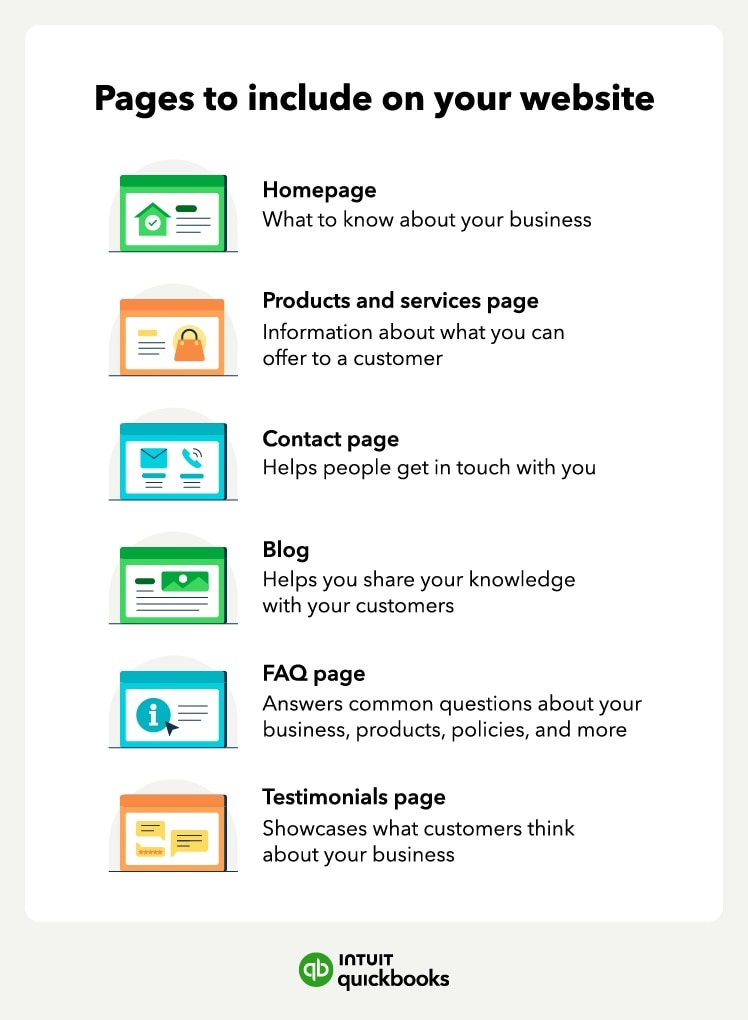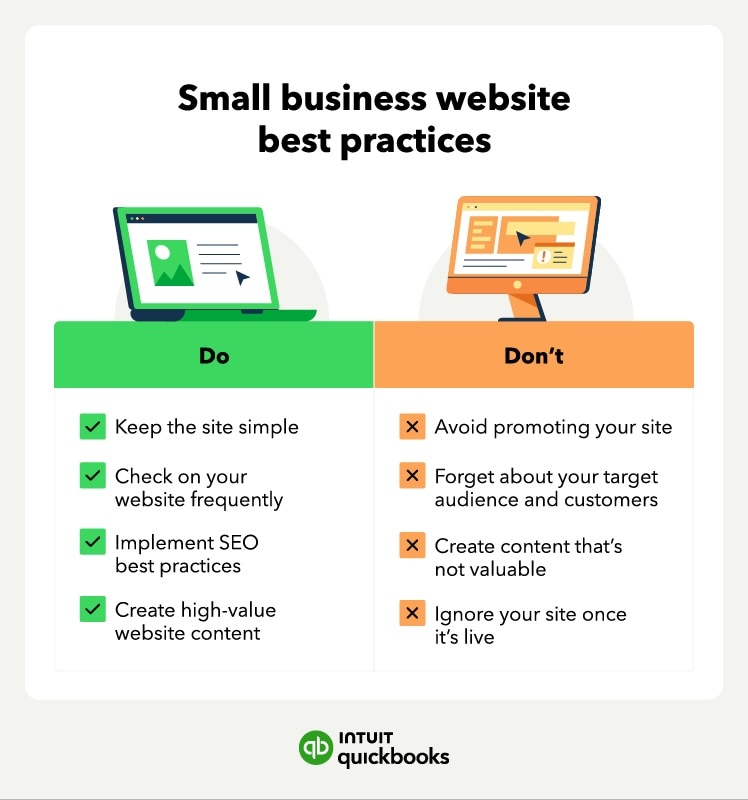4. Create website content
You have your domain, and your web hosting platform, and you’ve selected your website builder. Now it’s time to start to pull together the information that actually needs to go on your website.
Using the site plan discussed earlier, take a look at the templates your website builder offers and pick one you like. That’ll give you some direction about the type of content you’ll need to fill it up—how many photos, what blocks of copy, and more.
At a bare minimum, your business website should include:
- Homepage: Your homepage should feature the “need to know” information about your business. Consider it as the front door to your business so it’s important you think about the design and key messages.
- About page: Include details about the history of your business, your value proposition (what makes your brand better than your competitors), and even yourself as the business owner.
- Products and services page: Information about what your business offers. If you have an e-commerce website, customers should also be able to add items to their cart here.
- Contact form page: A contact form to help people reach you. This can include your business's phone number and social media links. If you have a brick-and-mortar location, you should also list your business address.
- Blog: Your blog lets you showcase your expertise and share your knowledge with your customers. It can also help you build authority and increase your chances of showing up in the search engine rankings.
- FAQ page: Adding an FAQ page makes it easy to answer your customers’ most common questions. Start by focusing on the top 10 questions you get about your services or products.
- Testimonials page: Including a testimonials page is a great way to highlight your customers’ experiences with your services or products. You can pull reviews from Google and other review pages or ask your customers to submit a testimonial via email.
You might also want to add a blog, an FAQ page, testimonials, or other pages. If you’re not sure what other pages you should include, consider looking at your competitors’ sites. Remember, the best small business websites convey the information their customers need and let business owners share their knowledge and expertise.
Start one folder or document where you can keep all this information in one spot. It’ll make things a lot easier when it’s time to actually start dropping it into your website template.










 Check to see if your preferred domain name is available by doing a simple web search. Type the URL in the search bar and see if anything comes up. If no site loads, the URL is likely available for purchase.
Check to see if your preferred domain name is available by doing a simple web search. Type the URL in the search bar and see if anything comes up. If no site loads, the URL is likely available for purchase.  Make sure your website is easy to use and showcases information that your target audience will find helpful.
Make sure your website is easy to use and showcases information that your target audience will find helpful. 




